Potrebujeme váš súhlas na využitie jednotlivých dát, aby sa vám okrem iného mohli ukazovať informácie týkajúce sa vašich záujmov. Súhlas udelíte kliknutím na tlačidlo „OK“.
ASTM E1329-10
Standard Practice for Verification and Use of Control Charts in Spectrochemical Analysis (Withdrawn 2019)
Automaticky preložený názov:
Štandardné praktiky pre overenie a využitie regulačných diagramov v analýze spectrochemical
NORMA vydaná dňa 1.10.2010
Informácie o norme:
Označenie normy: ASTM E1329-10
Poznámka: NEPLATNÁ
Dátum vydania normy: 1.10.2010
Kód tovaru: NS-41322
Počet strán: 12
Približná hmotnosť: 36 g (0.08 libier)
Krajina: Americká technická norma
Kategória: Technické normy ASTM
Kategórie - podobné normy:
Anotácia textu normy ASTM E1329-10 :
Keywords:
confidence interval, control charts, normalization, standardization, verification, Calibration--spectrochemical analysis instrumentation, Confidence interval/limit/coefficient, Control charts, Data analysis--spectrochemical, Instrumental measurement--spectrochemical, Normalization, Quality control (QC), Radiation exposure, Spectral data--metals/alloys, Spectrochemical analysis, Spectrometry, Spectrophotometry, Spectroscopy, Statistical methods, Verification
Doplňujúce informácie
| Significance and Use | ||||||||||||
|
Consistency in analysis depends on being aware of a significant change in instrumental response, such as that caused by drift or changes in analytical precision, or both, and taking corrective action. The usual corrective action for drift is standardization. Standardization, however, when there is no real need, can only broaden the spread of subsequent analyses. One purpose of this practice is to set guidelines that will avoid “unnecessary standardization.” To control manufacturing processes, there must be confidence that a consistent material is being produced and that the analysis of the material is reliable. For assurance that the material meets specification, a purchaser may require the supporting record of control charts to assess that proper analytical control has been maintained. Ideally, variations in analytical results may be held to chance causes. The concept of a confidence interval or limits on a control chart is based on what can be expected when all normal precautions are exercised. When results appear to go out of control, the analyst should consider and correct what might be an assignable cause. As experience is accumulated, however, it may not seem unusual for readings to drift with time as optics degrade, detector response changes, or excitations conditions change, for example, when deposits build up on a counter electrode (a correctable assignable cause), or the longer range effects as an X-ray tube deteriorates. |
||||||||||||
| 1. Scope | ||||||||||||
|
1.1 This practice covers procedures for determining if a spectrochemical analysis is under statistical control. 1.2 Criteria are presented for determining when corrective action is required. 1.3 Control will be effected by using verifiers to test instrument response. It is recommended, although not required, that this be accompanied by the plotting of control charts. 1.4 The preparation of control charts is described. 1.5 Limitations—The procedures that are described do not apply to analyses that require a calibration each time a set of analyses is run. Reference is made specifically to atomic emission spectrometry, but the practice has a more general application. 1.6 This practice does not apply to validation procedures that monitor the correctness of calibration. |
||||||||||||
| 2. Referenced Documents | ||||||||||||
|
Podobné normy:
Historická
1.12.2012
Historická
1.9.2008
Historická
1.2.2014
Historická
1.9.2009
Historická
1.3.2011
Historická
1.7.2011


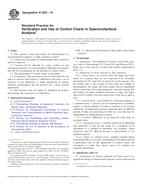
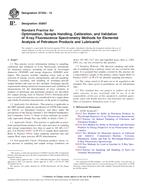 ASTM D7343-12
ASTM D7343-12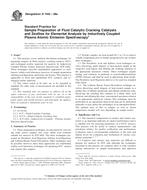 ASTM D7442-08a
ASTM D7442-08a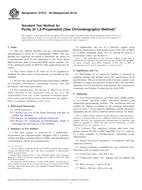 ASTM D7515-09(2014)..
ASTM D7515-09(2014)..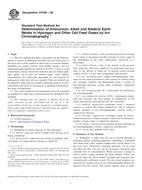 ASTM D7550-09
ASTM D7550-09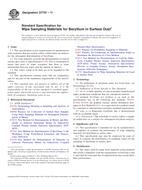 ASTM D7707-11
ASTM D7707-11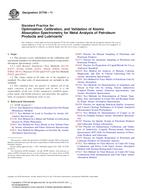 ASTM D7740-11
ASTM D7740-11
 Cookies
Cookies
